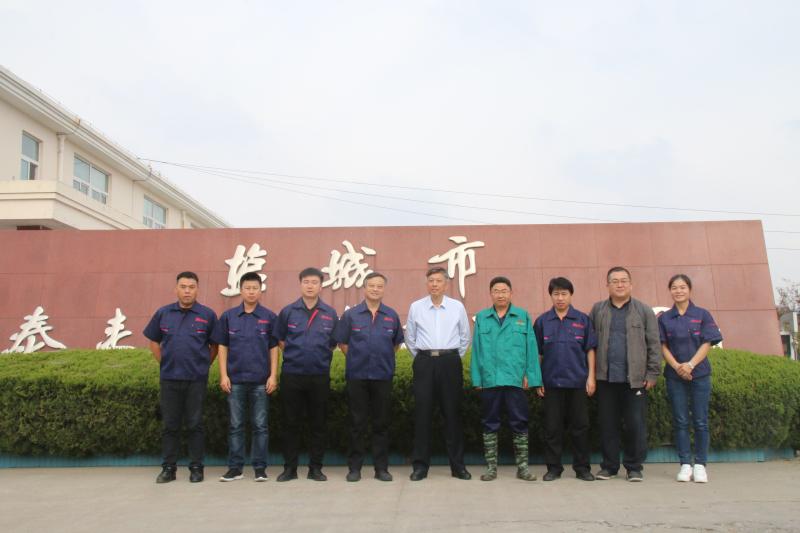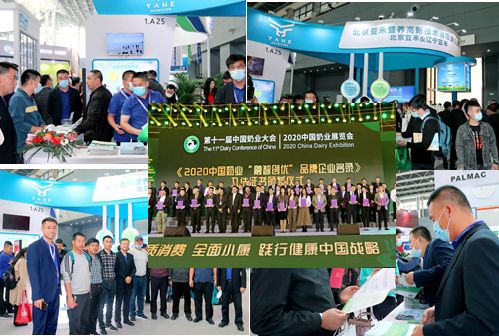Abstract: The particle size of soybean meal refers to the particles with different structural sizes existing in soybean meal. Although there is no specific requirement for soybean meal particle size in the national standard, the particle size of soybean meal as a commodity has a certain impact on its transaction price.
Factors affecting soybean meal quality_What are the factors affecting soybean meal quality_What are the factors affecting soybean meal quality
1. Particle size
Soybean meal particle size refers to particles with different structural sizes present in soybean meal. Although there is no specific requirement for soybean meal particle size in the national standard, the particle size of soybean meal as a commodity has a certain impact on its transaction price. Generally, the shape of soybean meal is loose granular or flake. Meals that are too broken or too fine or large are not liked. The main factors that cause the soybean meal to be over-crushed and fine are: low moisture of soybean; small crushed particle size; thin green sheet; long steaming time in the steamer; low moisture of soybean meal. Soybean cake agglomeration is a common phenomenon in soybean leaching production. The content of moisture, residual solution, residual oil and urease of the agglomerated soybean meal is much higher than that of the normal meal. The harm is that it reduces the feed value of the soybean meal and the second is inconvenient for the storage and processing of feed manufacturers. The main factors leading to the agglomeration of soybean meal are: high moisture of soybean; immature and post-ripening soybeans are used for oil production; green tablets are immersed in large water; low leaching temperature; direct steam quality is poor; insufficient steaming time ; Material layer is too high. In addition, high-temperature, high-moisture soybean meal can easily form large lumps during the accumulation and storage of the meal storehouse. In severe cases, it will grow mold and deteriorate until the value of feed is lost.
2. Color
Normal soybean meal should have the yellowish white to yellow brown inherent in soybean meal itself. When processing aged, red heat, mildewed soybeans, or when the steaming time is too long, the soybean meal is darker in color until reddish brown. When more immature soybeans or green beans are processed, the soybean meal is bluish green, and the appearance is poor; when the quality of direct water vapor is poor or the evaporation time is short, the soybean meal is whitish.
3. Smell
Normal soybean meal should have its inherent smell and no peculiar smell. When processing red heat and moldy soybeans, soybean meal often has the smell of halal; when the residual solution and urease exceed the standard, soybean meal often has a heavier solvent smell and beany smell. In addition, some enterprises often blend hydrated oil feet and waste bleaching earth into soybean meal in order to achieve income generation. The rancid hydrated oil feet will make the soybean meal produce an unpleasant smell and the waste bleaching earth will increase the color of the meal. This method of income generation should be prohibited.
4. Protein content and influencing factors
Protein content is an important indicator of soybean meal, which directly reflects the feeding value of soybean meal.
Soybean meal contains about 40-50% protein, lysine 2.5% ~ 3.0%, tryptophan 0.6% ~ 0.7%, methionine 0.5% ~ 0.7%, cystine 0.5% ~ 0.8%; carotene is less, only 0.2 ~ 0.4mg / kg, 3 ~ 6mg / kg for each of flumin and riboflavin, 15 ~ 30mg / kg for niacin, 2200 ~ 2800mg / kg for choline. Soybean meal is relatively lacking in methionine. The crude fiber is mainly derived from soybean hulls. The nitrogen-free extracts are mainly disaccharides, trisaccharides, and tetrasaccharides. The starch and mineral content are low in calcium, phosphorus, and vitamin A, vitamin B, and vitamin B2.
The protein content of soybean meal is related to the following factors: one is the protein content of the soybean raw material itself; the second is the pretreatment process of soybean. For example, the protein content of soybean meal produced by peeling process technology is 7-8% higher than that of soybean meal produced by ordinary process; third, the moisture and crude fat in the meal also have a certain effect on the protein content.
5. Moisture content and influencing factors
Moisture content is another important indicator of soybean meal. When the moisture in the meal exceeds the allowable value, not only the nutritional value decreases but also it is not convenient for long-term storage. But the moisture is too low and the meal is flammable. For the sake of economic benefits, the soybean meal produced by most oil leaching plants has high water content. This problem is more prominent in winter. The main factors affecting the moisture of soybean meal are: the immersion moisture of the soybean meal, the working temperature of the extractor, the quality of the direct steam, the structure of the steamer, the height of the desolvation layer and the conveying method of the meal. If the direct steam is carrying water, the working temperature of the extractor is lower, and the material layer of the desolvation layer is higher, the moisture of the soybean meal is higher.
6. Urease activity and influencing factors
Raw soybean meal contains a variety of anti-nutritional factors, especially anti-trypsin inhibitory factor (TI), and its activity is directly related to the digestion, absorption and utilization of soybean meal protein by monogastric animals. When pigs and poultry are fed with raw soybean meal, it will cause diarrhea, which will affect the weight gain and egg production rate. For calves and piglets, it will cause severe diarrhea, slow weight gain, and even death. The urease (UA) in soybean meal It can also inhibit the digestion and absorption of nutrients in feed by animals. Since the content of (TI) and (UA) in soybean meal is positively correlated, the two are destroyed at the same rate under high temperature, high humidity and high pressure conditions, so urease activity is often used to express antitrypsin in soybean meal The degree of destruction of anti-nutritional factors. The high urease activity indicates that the anti-nutritional factors in the meal have not been effectively destroyed and the soybean meal has not been matured; but the lower the urease activity, the better. The urease activity is too low, indicating that the soybean meal is overheated. The lysine, arginine and cystine in the soybean meal will be destroyed due to excessive heat, and the Maillard reaction will further reduce the nutritional value of the soybean meal.
(The Maillard reaction is also called "non-enzymatic browning reaction", which was proposed by French chemist LC Maillard in 1912. The so-called Maillard reaction is a non-enzymatic browning widely present in the food industry, which is a carbonyl compound (The reaction between (reducing sugars) and amino compounds (amino acids and peptides), after a complicated process, eventually produces brown or even black macromolecular substance melanin or pseudo-melanin, so it is also called carbonylamine reaction.)
It can be seen from this that the reasonable control of urease activity during soybean crushing is an important task in soybean oil production.
The content of urease activity is related to the following factors: one is the production process, such as the pre-pressing-leaching production process and the puffing-leaching production process, the urease content is less; the second is the desolvation time, because the combined effect of damp and heat is passivation It is an important condition of urease, so prolonging the time of steam removal can reduce the content of urease in the meal. The third is the softening of soybeans, drying, and steam quality all have a certain effect on the activity of urease.
Relationship between the nutrition of soybean meal and urease activity
Soybean meal is the best source of vegetable protein. In the production of soybean oil leaching, the DTDC steaming machine has the following effects on the defatted meal: (1) removal of solvent; (2) destruction and inhibition of anti-nutritional factors; (3) control of soybean meal protein denaturation; (4) adjustment of soybean meal moisture; (5) Adjust the color and flavor of soybean meal. In order to detect the quality of soybean meal, the state and enterprises have developed soybean meal indicators: use the detonation test and the detection of residual solution to assess the effect of desolvation; use the dry weighing method or rapid moisture analyzer to assess the moisture content of the meal; use the detection of urease activity and Sensory test to determine the degree of inactivation and maturation of anti-nutritional factors.
Anti-trypsin is a protease inhibitor in raw beans, which inactivates trypsin and rennet in the digestive tract, reduces protein digestibility, and causes increased pancreatic compensation, while trypsin is rich in sulfur Amino acid, a large amount of digestive enzymes, exacerbates the lack of sulfur-containing amino acids in soybean protein. In addition, allergic proteins such as glycinin and β2 glycinin are also very important, they will reduce feeding efficiency and increase diarrhea in young animals such as piglets. Soybean contains different amounts of urease, which is close to the content of antitrypsin. The degree of thermal denaturation has similar changes to antitrypsin. Therefore, a suitable detection range for urease activity can be formulated as an indirect estimation index for the suitability of soybean meal processing to supervise and guide production. At the same time, according to the similar relationship between soybean meal urease activity and soybean meal heat denaturation degree, that is, excessive heating is our customary use of urease activity to indicate the maturity of soybean meal.
For example, Thailand Zhengda Group determined that the urease activity of soybean meal is 0.05-0.25 (ΔpH); the index recommended by the American Feed Industry Association is 0.05-0.20 (ΔpH). Domestic oil processing and feed companies all agree on urease activity as a sign of judging the maturity of soybean meal, and use it to guide the production and purchase of soybean meal and feed.
7. Residual amount of solvent and influencing factors
The national standard stipulates that the residual amount of soybean meal is ≤700mg / kg. Feeding livestock and poultry with high residual soybean meal will be detrimental to animal growth and development and may cause various diseases until death. The factors affecting the residual amount of soybean meal are: first, the quality of direct steam; second, the time of steam removal is reflected in the height of the material layer; third, the structure of the steam removal machine including the diameter and number of steam injection holes; fourth, the steam removal machine Vapor phase temperature. The residual amount of solvent in the meal is closely related to the urease content. The urease activity of soybean meal with excessively soluble residuals is also often high, which shows that it is very important to control the residual amount of soybean meal.
8. Ash content and influencing factors
The ash content in soybean meal is directly related to the mud sand content in soybean and side by side mud. Excessive silt content will reduce the palatability of soybean meal. Strengthening the cleaning of soybeans, suction and dust removal, and removing side by side mud in soybeans are important measures to reduce the ash content of soybean meal.
9. What is protein solubility and why do we need to measure protein solubility?
High temperature can make reducing carbohydrates, such as glucose and lysine epsi1on free amino acid function, namely Maillard reaction (Mail1ard Reaction). As a result, the lysine molecule becomes unusable, and the protein digestibility is reduced. Other amino acids in protein molecules, such as arginine, histidine, and tryptophan are also affected by excessive heat, and reducing compounds also include ketones and aldehydes. The product of the Maillard reaction is brown in appearance. Therefore, it is also called brown reaction.
The method of identifying soybean meal overmaturation is to determine the protein solubility of soybean meal in 0.2% KOH solution. This method has been considered as the best method for evaluating over-processing and under-processing of soybean in the past ten years.
The principle is: heating makes free amino acids and other compound groups form intermolecular and intramolecular bonding bonds that cannot be opened by digestive enzymes, thus reducing the solubility of proteins.
In the late 1960s, Purina Feed Company first used protein solubility as a method for evaluating the suitability of soybean meal processing.
Araba and Dale concluded in an article published in 1990 that, for chickens, the nutritional value of soybean meal with protein solubility below 70% has been destroyed, and protein solubility below 65% is almost certainly overheated soybean meal.




.jpg)
